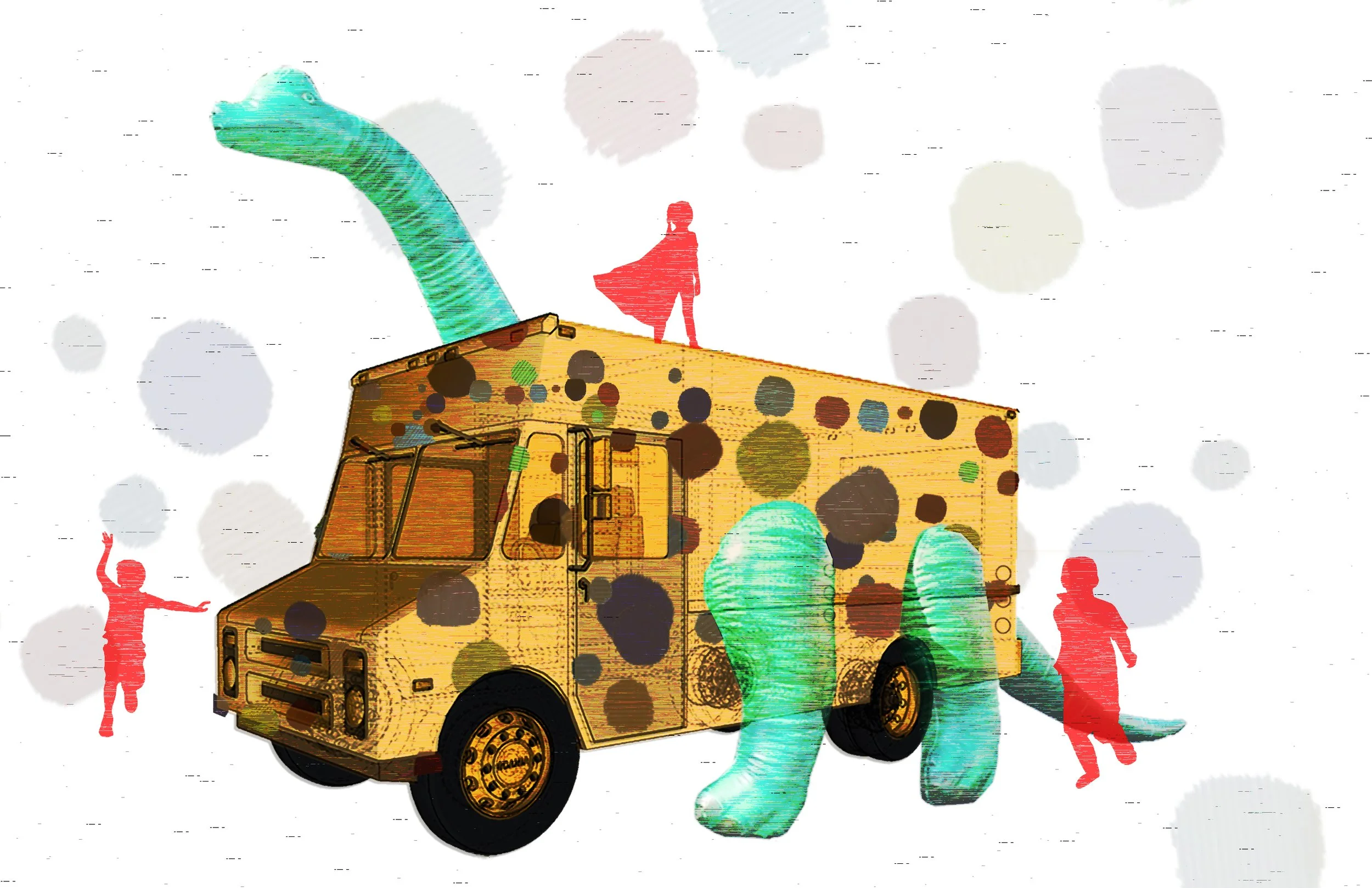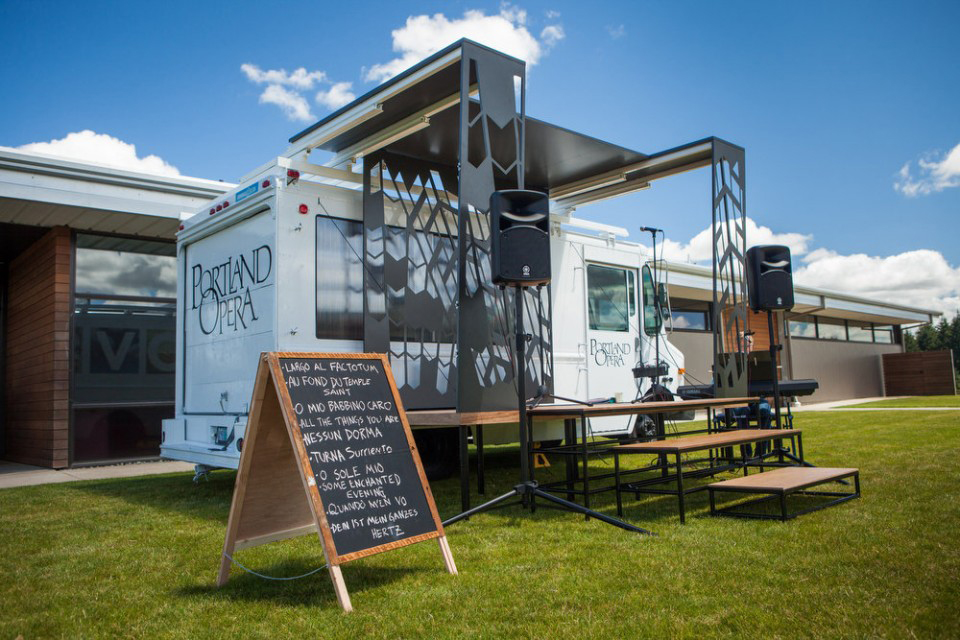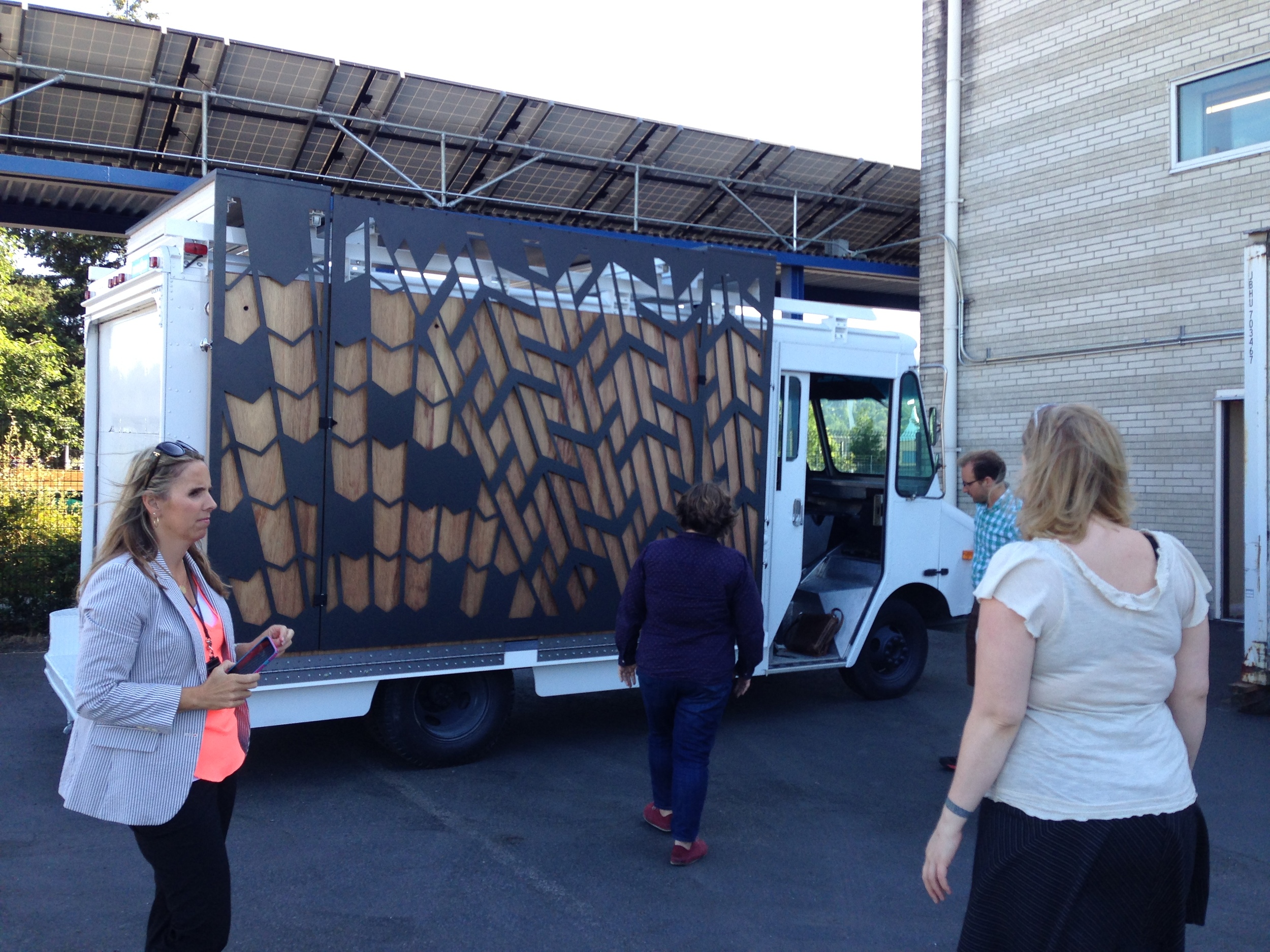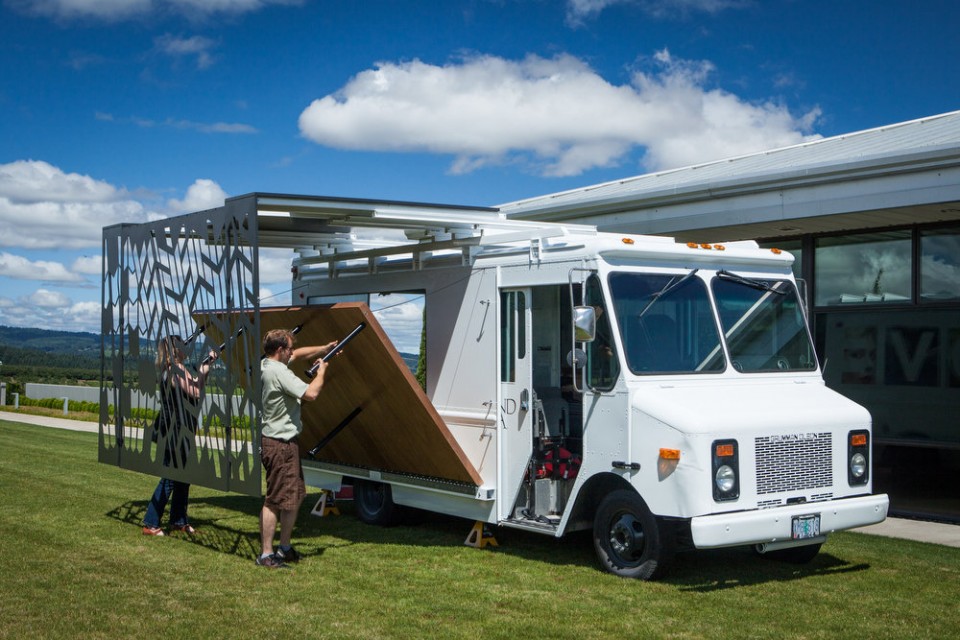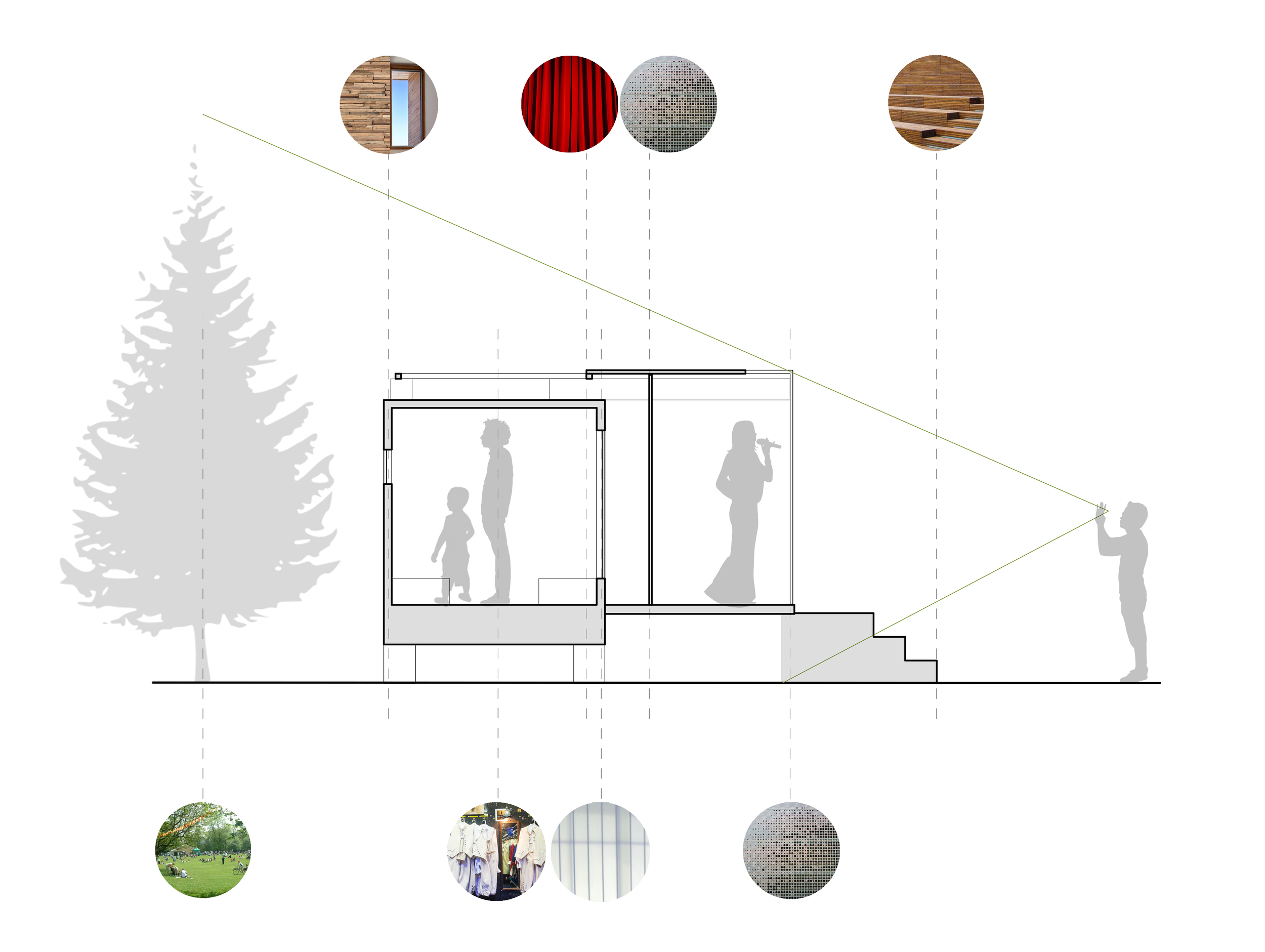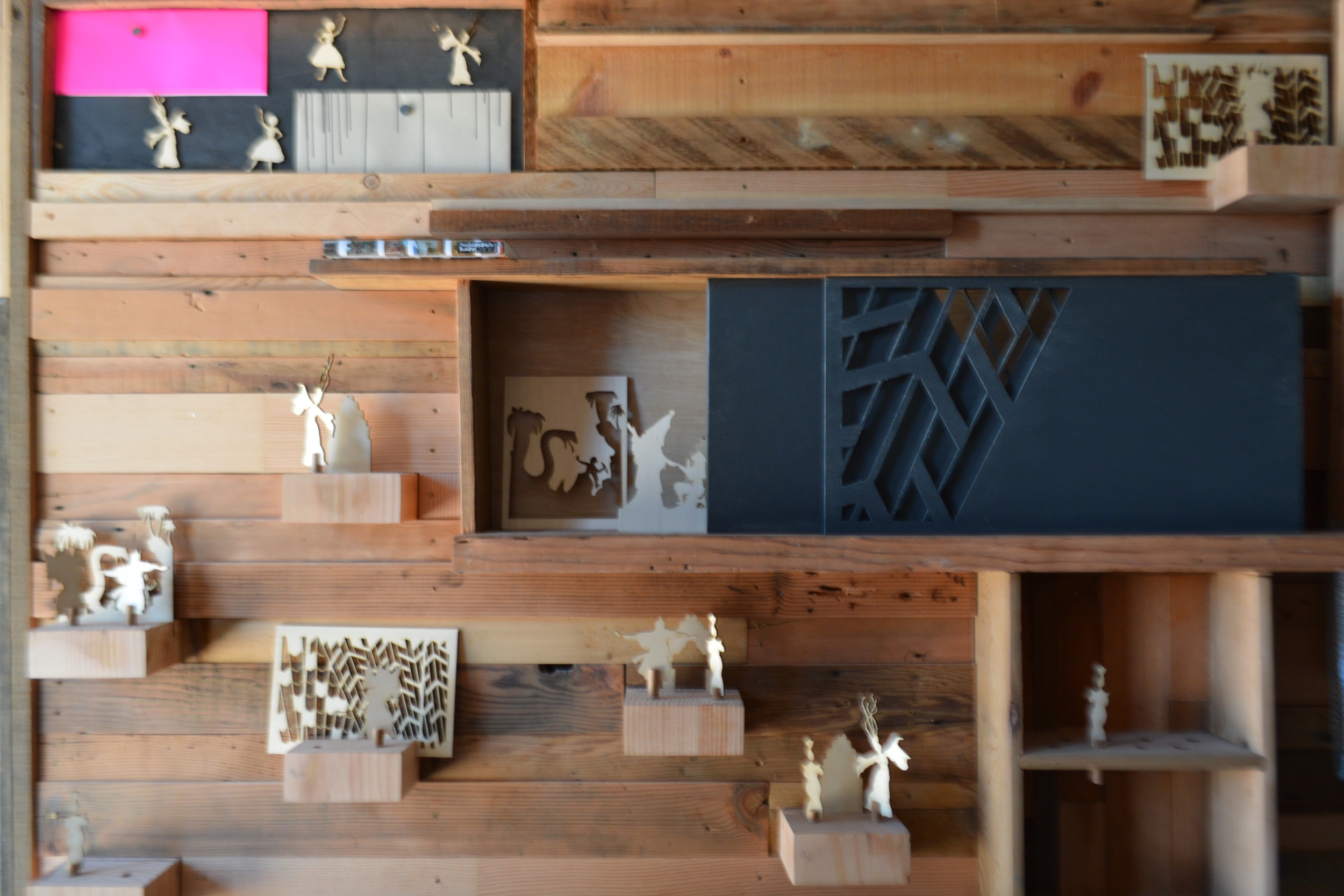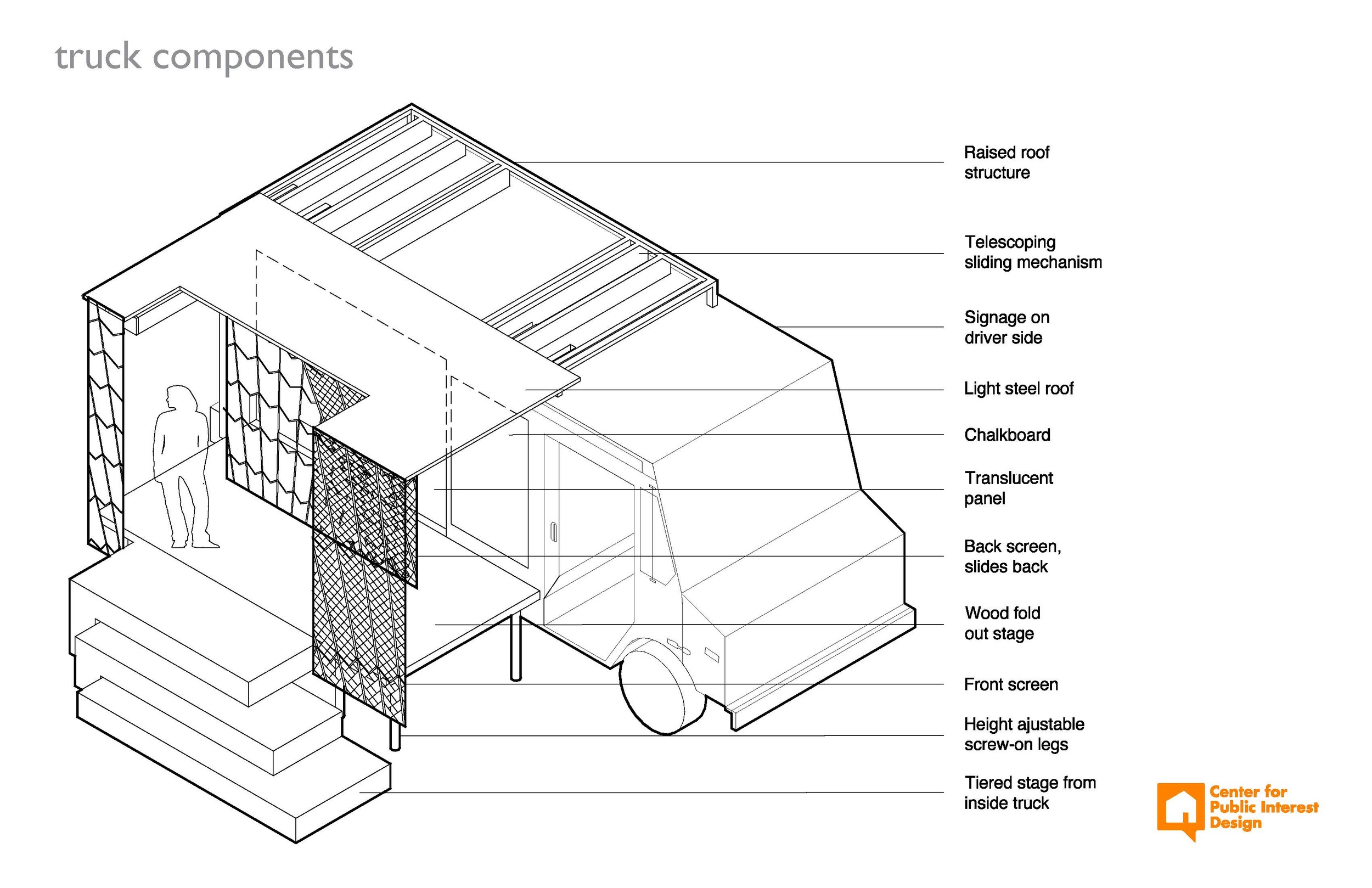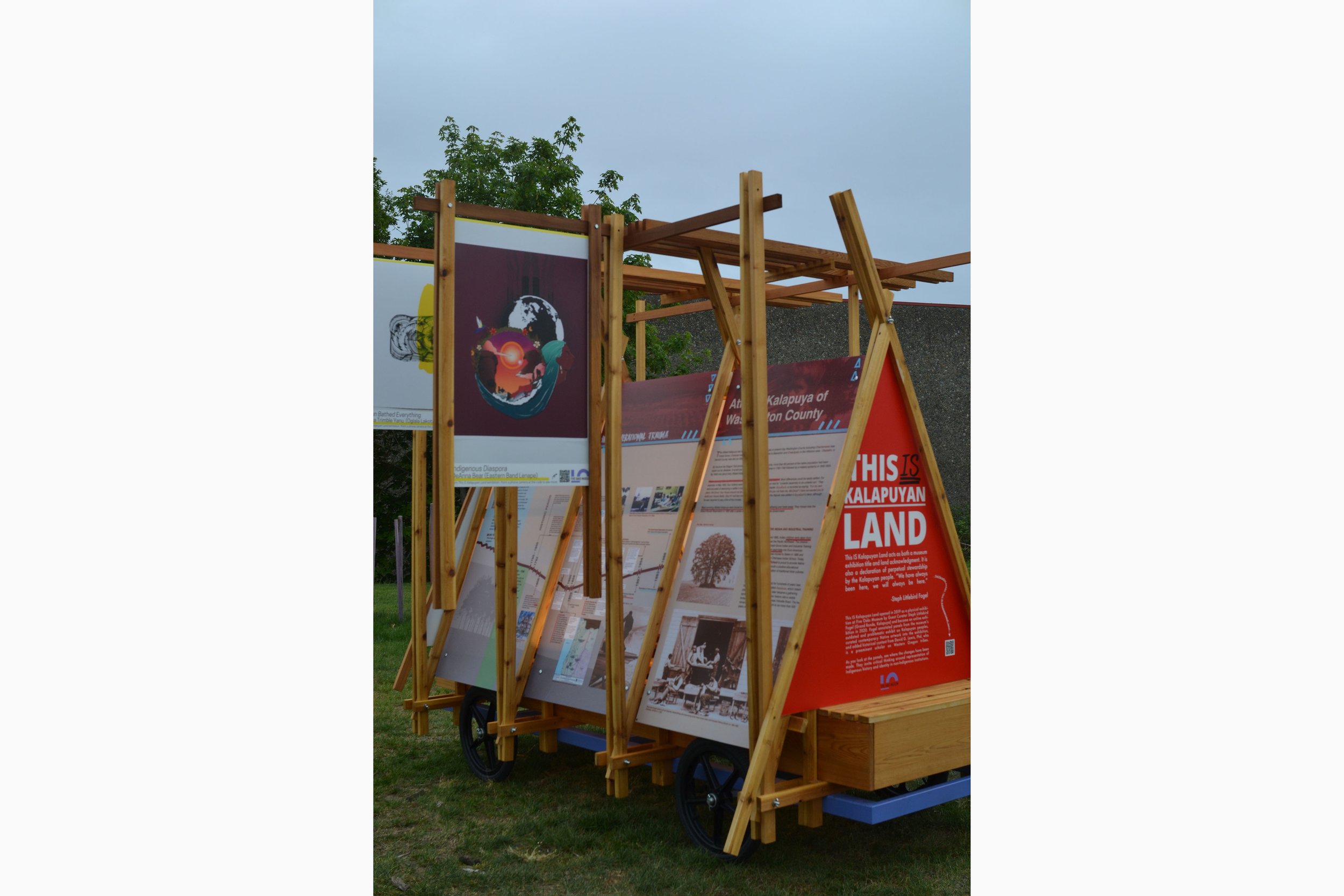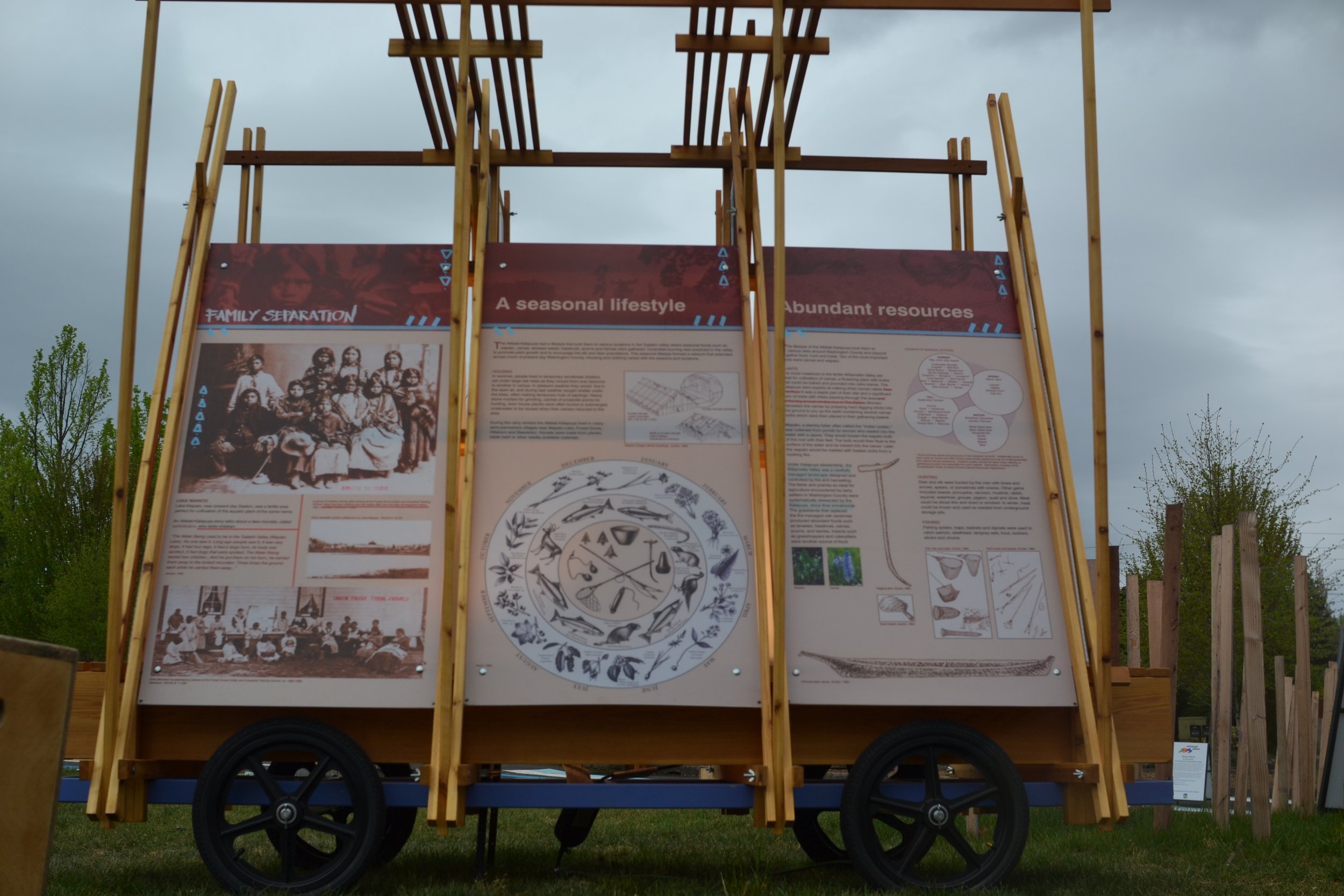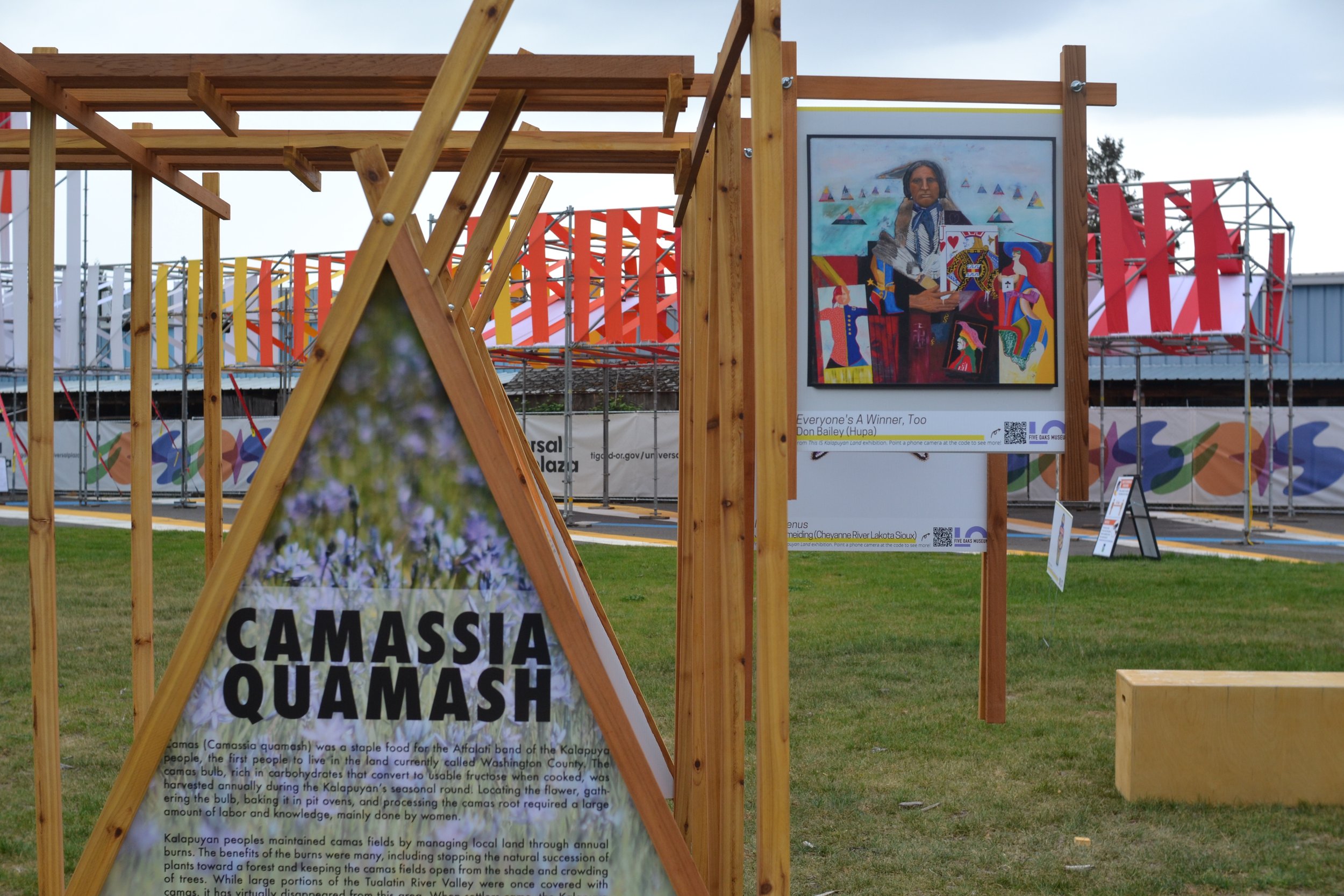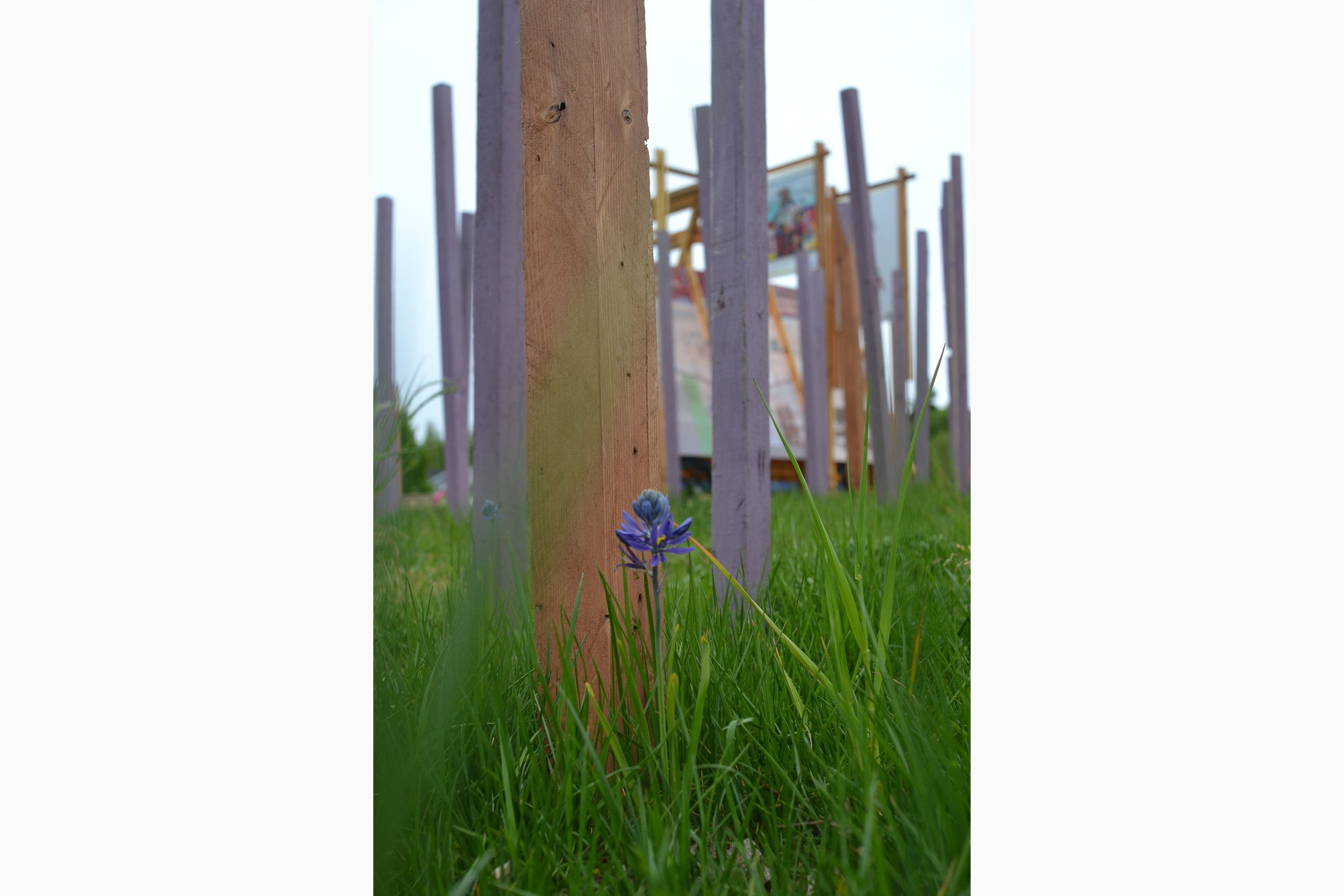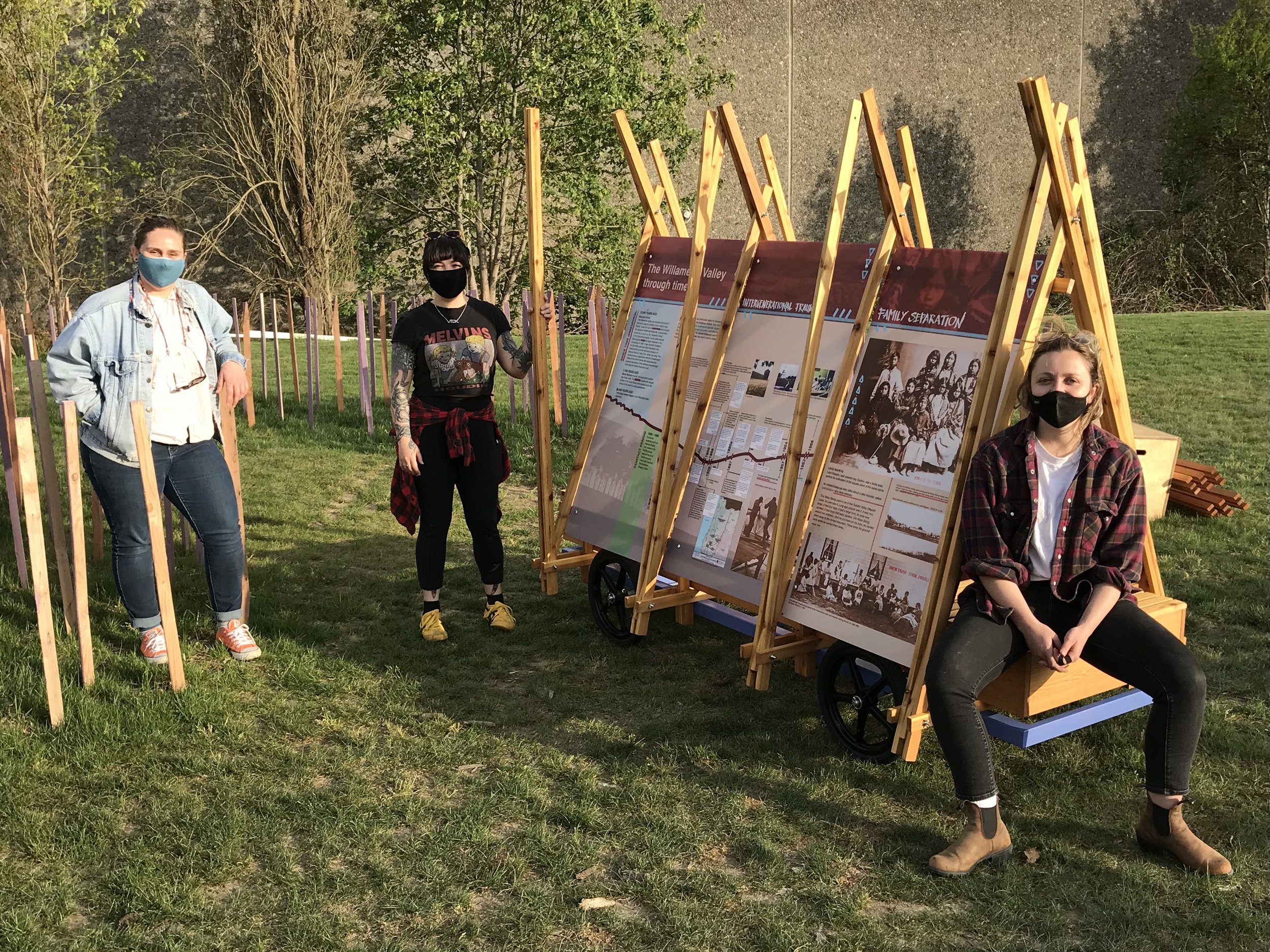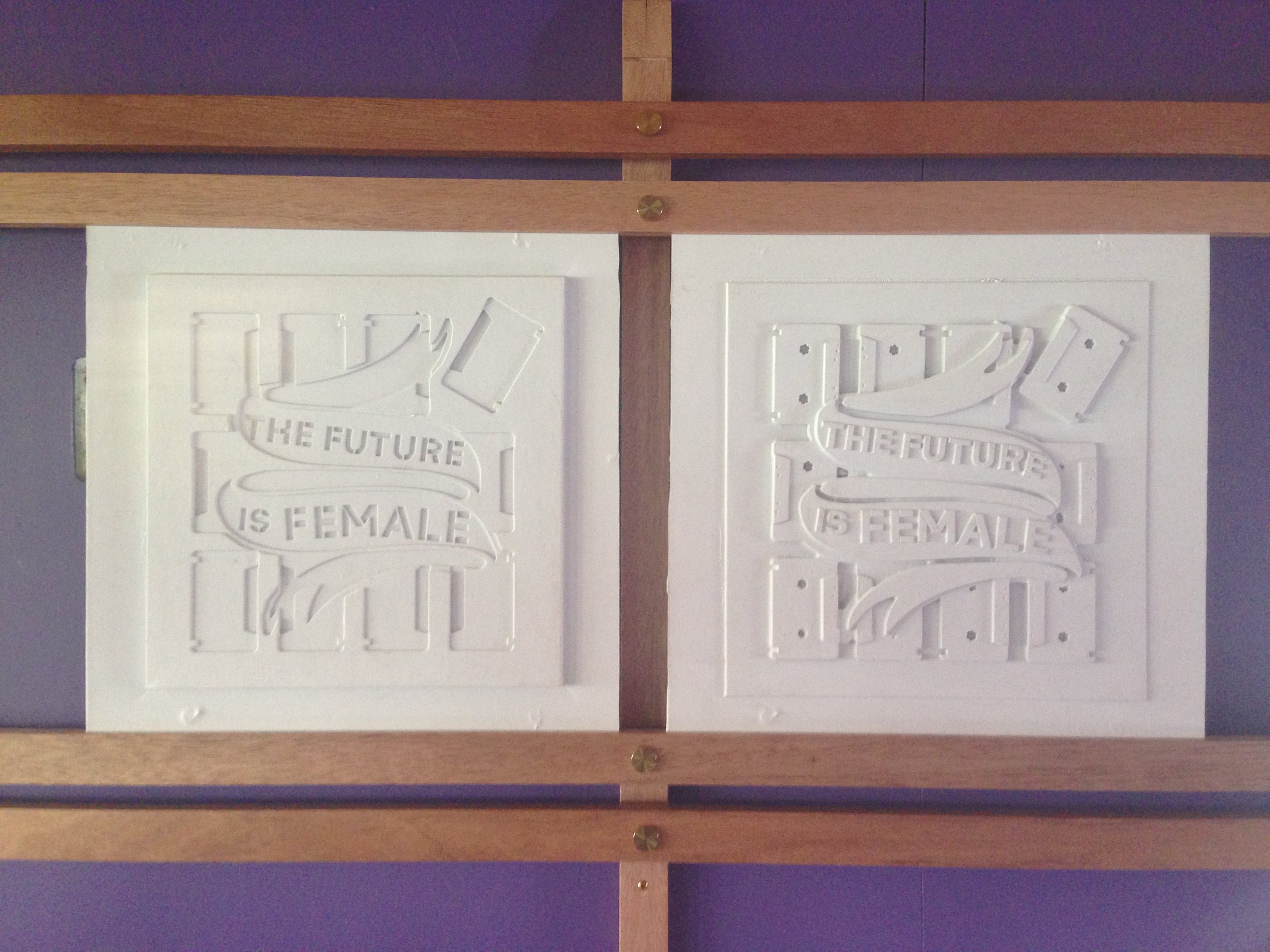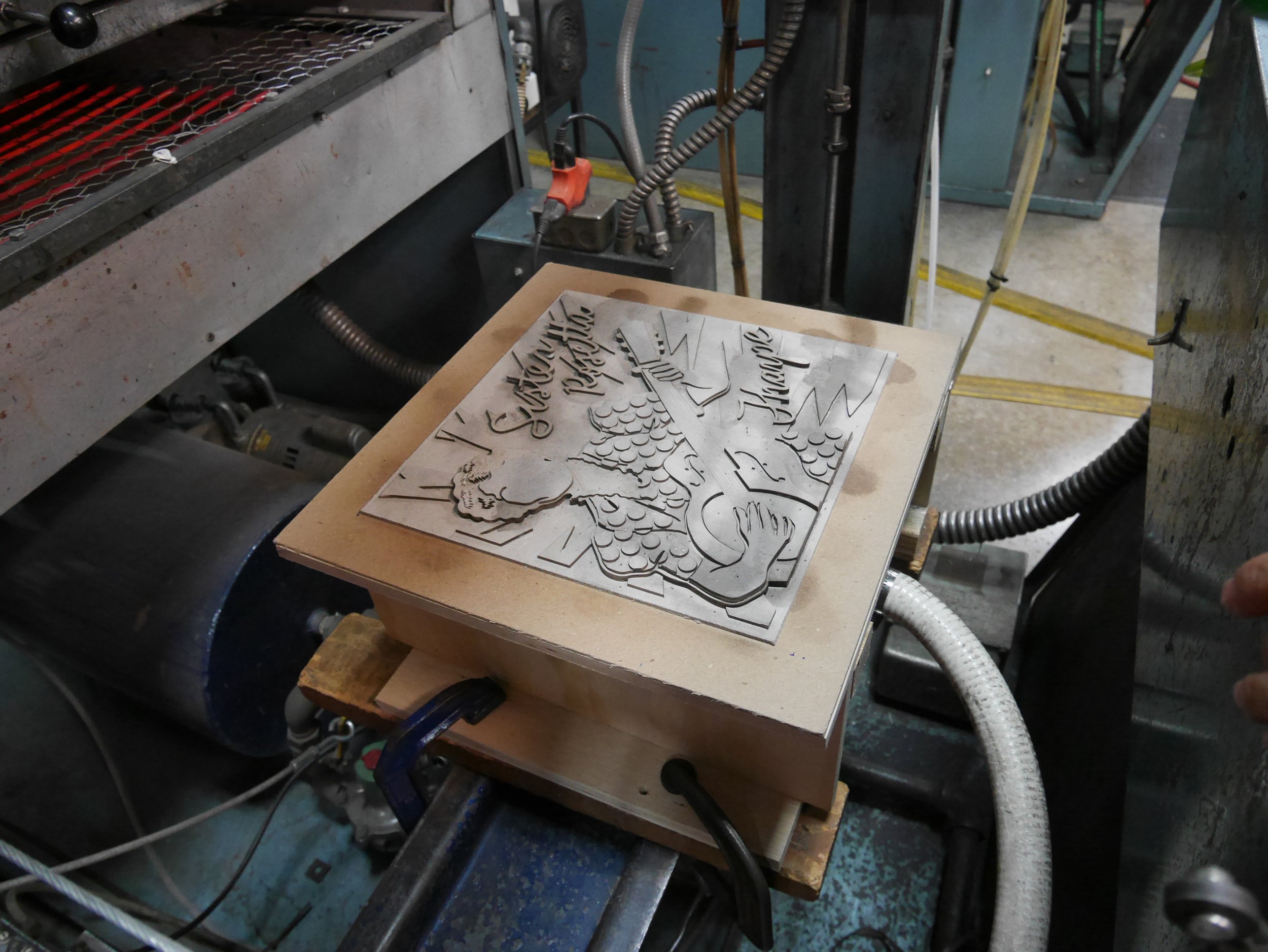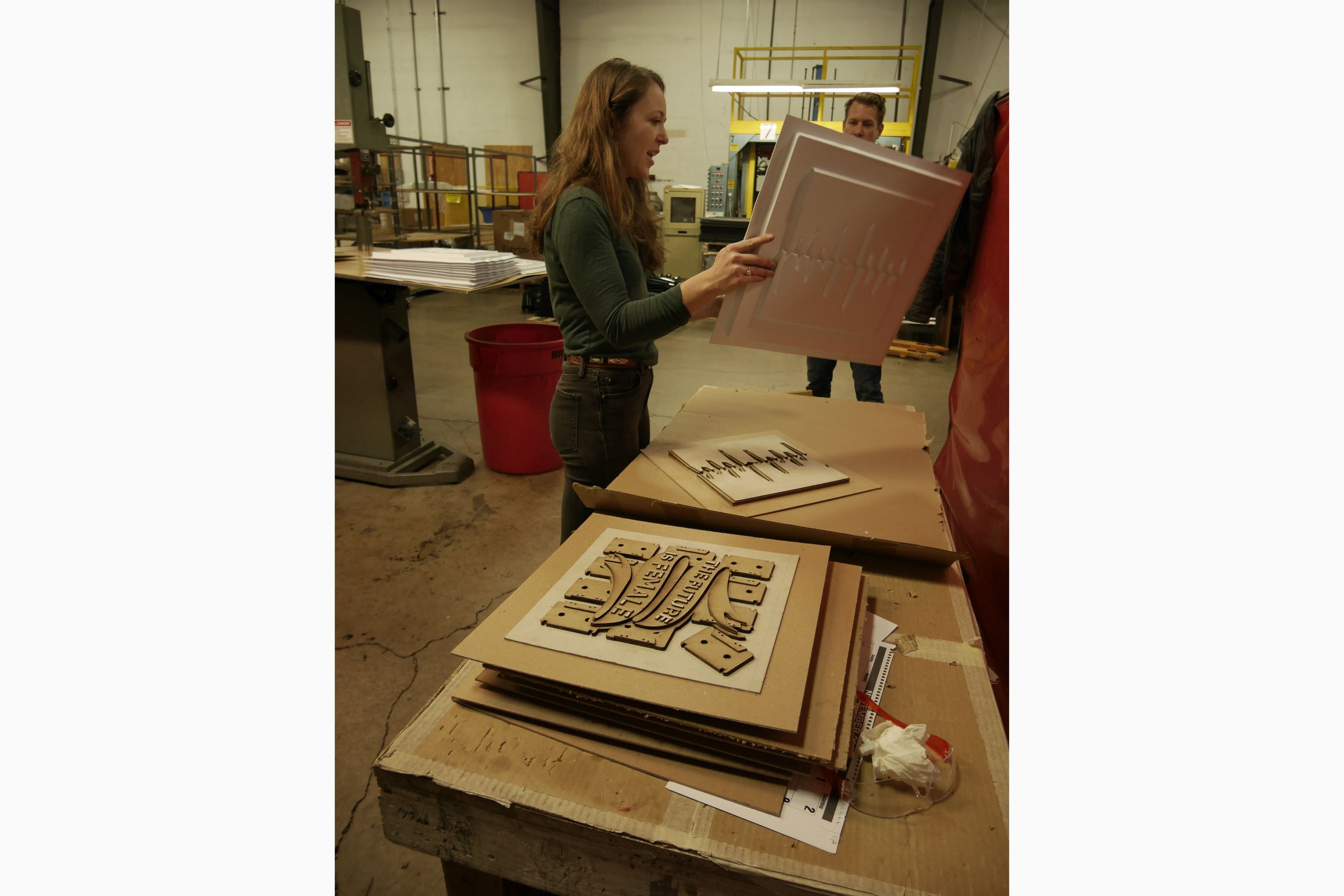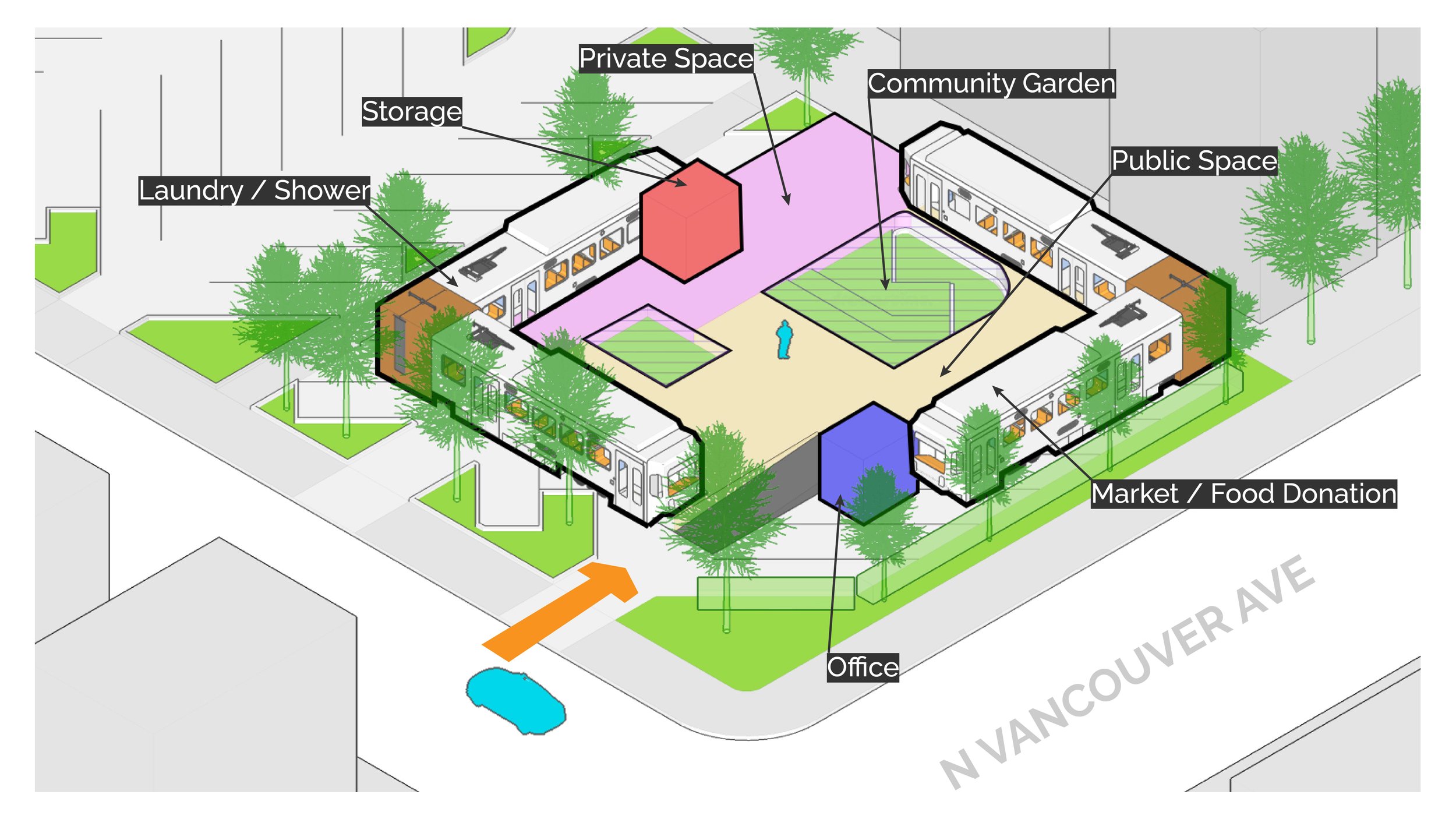Mobile Placemaking / Mobile Urbanism
Context for Mobile Placemaking / Mobile Urbanism
The design of our cities can largely be understood in terms of the transportation systems that have been created to move people and goods in and out of the city. The infrastructure that supports this mobility (highways, parking lots, light rail lines, etc.) has repeatedly devastated communities and created fissures between neighborhoods and neighbors. Communities of color have been particularly impacted by the negative effects of these developments, from having entire communities razed to make room for highways, to being disproportionately exposed to air, sound, and light pollution, to experiencing high rates of displacement from the city center when the combination of expanding transit systems and rising property values spark gentrification in historically minority neighborhoods. Too often transportation infrastructure does create a “wrong side of the tracks” in terms of equity, public health, and community. In nearly all neighborhoods, roads and other transportation infrastructure create hard divisions between citizens and communities that can create significant social, economic, and environmental challenges. But what if the infrastructure and systems of transportation that have torn apart our neighborhoods could be reimagined to bring communities together, increase access to city amenities, and create meaningful spaces for all?
This research area explores the role of mobile architecture within community placemaking, asking how mobility confronts and conforms to social, political and economic systems. It is examined within the framework of mobile urbanism (mobile services, amenities, and infrastructure at a systems and city level), mobile architecture (individual mobile units that interact with the city), and mobile placemaking (the transformation of spaces as the results of mobile architectures). This work aims to think through the arc of human mobility, through human settlement patterns to intermodal urban hubs, and be rooted in a recognition that indigenous wisdom offers critical insight into successful mobile design strategies.
There is increased attention on mobile responses to urgent problems amid mounting social issues such as a global pandemic, human migration shifts due to climate change, a renewed focus on equity in support of Black Lives Matter, and inadequate availability of affordable housing. It is also the premise of this research that mobile placemaking has the potential to distribute the amenities of a city more equitably by deploying resources to the people, rather than expecting people to come to the resources, which often include significant social and economic barriers. These larger considerations provide the critical context for emerging research on the subject of mobile placemaking, while the discrete projects that follow offer an opportunity to explore aspects of mobile placemaking through design and fabrication at a scale ideal for investigations with students and community partners.
Location
Portland, Oregon, United States
Opera a la Cart
The CPID and the Portland Opera teamed up to create an innovative way to reach out to new opera audiences and communities in the Portland metro area: Opera a la Cart. Inspired by Portland’s celebrated food-cart culture, faculty member Todd Ferry, with students in the School of Architecture and Center for Public Interest Design, took a standard box truck provided by the Portland Opera, combined it with the idea of Portland’s popular food carts, and designed a moveable performance cart, which the opera company is using to deliver pop-up performances in communities all over the city. The CPID was excited to collaborate with the Opera on this project, because it explored how design could support a local cultural organization while expanding arts programming in communities throughout Portland.
The project team made a series of provocative, functional modifications to both the interior and exterior of a formerly ordinary Grumman Olson truck. The architectural alterations include a fold-out stage, a telescoping overhead shelter and vertical columns that suggest a proscenium arch, and storage for set pieces. The venue also includes an interactive interior wall made from reclaimed materials that will allow visitors to engage and learn more about elements of the opera, such as set design, music, costumes, story-telling, etc. as programming develops in the future. The CPID team built this interior feature, and worked closely with the fabricators at Figure Plant who helped bring the exterior components of the design into a reality.
An innovative approach to research on this project was undertaken. With an emphasis on exploring how this mobile performance venue might best reach underserved communities that might not otherwise get to experience opera or its associated arts, the CPID conducted a series of pop-up performances in Portland communities where the CPID has been active on other projects: Gateway, Cully, Rosewood, and PSU. Three opera singers accompanied the truck that was to be transformed to these four locations to try different arrangement scenarios and get feedback on how the truck might be most useful and well-received in communities that often have limited access to the arts, let alone opera. The performers were enthusiastic partners, agreeing to sing in, on, adjacent to, and in front of the truck, which allowed the design to team to understand the implications of each position on the audience relationship and pragmatic requirements. At the conclusion of one of the performances a houseless individual and his dog came up to our group to offer appreciation for the impromptu concert. The man said that he wanted to give something back in exchange and asked if he could share a joke that he wrote, which of course we obliged, leading to further discussions. While it is a minor example that falls outside of a structured exchange with a community, this man with very limited resources understood that a fun and productive relationship could be built with an exchange- you have songs, I have a jokes, let’s trade. This aspect of the research process provided crucial insight into both community perception and logistical considerations for mobile performances
CPID and the Portland Opera were awarded the 2017 Regional Arts & Culture Council Innovative Partnership Award for their collaboration on Opera a la Cart.
Mobile Mini-Museum
The Mobile Museum is a collaboration between the Center for Public Interest Design and the City Repair Project for the City of Tigard, an exhibit space put into motion to bring greater access to cultural stories.
Currently, The Mobile Museum serves as a land acknowledgment on the site of Tigard’s anticipated Universal Plaza, the homelands of the Kalapuyan peoples. The exhibit space features the Five Oaks Museum’s This IS Kalapuyan Land, curated by Steph Littlebird Fogel, with historical content by David G. Lewis, Phd. In the fall of 2020, three hundred and fifty camas lily bulbs were planted across the plaza’s field, to erupt in the spring with the blue hues native to this land. The exhibit arrived during their bloom to give greater context to the lily, and contemporary Indigenous art and practice. Once construction begins on the plaza, the lilies will be replanted along Fanno Creek, where each spring their flowers will remind us of these traditions of place. In the future, the Mobile Museum will be loaned to other organizations seeking to host public exhibits and conversation in Tigard and the Metro region.
This project was first explored in a Mobile Urbanism studio (Arch 480) taught by Todd Ferry and Molly Esteve, and was inspired by Nyaz Addison’s design proposal within the studio.
Mobile Play
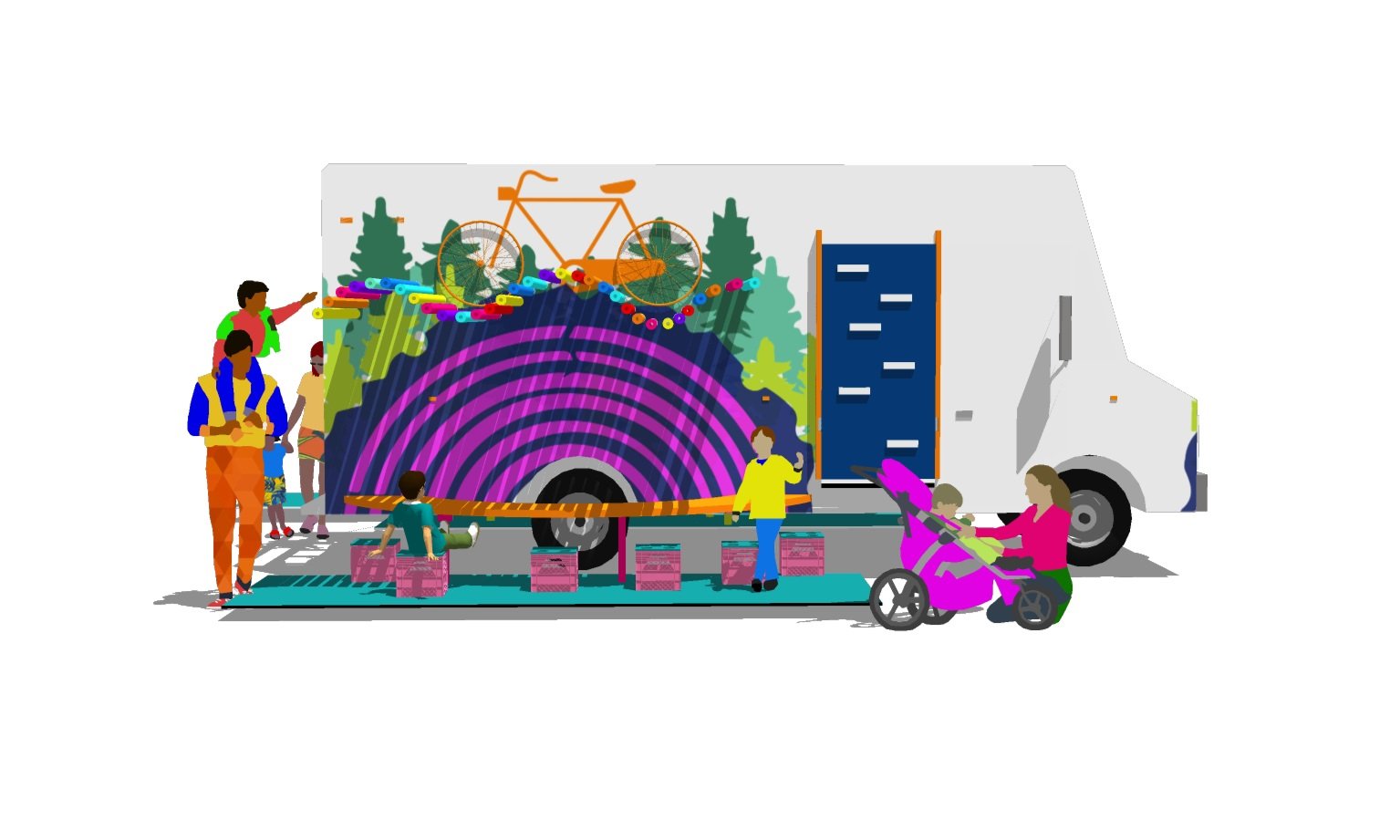
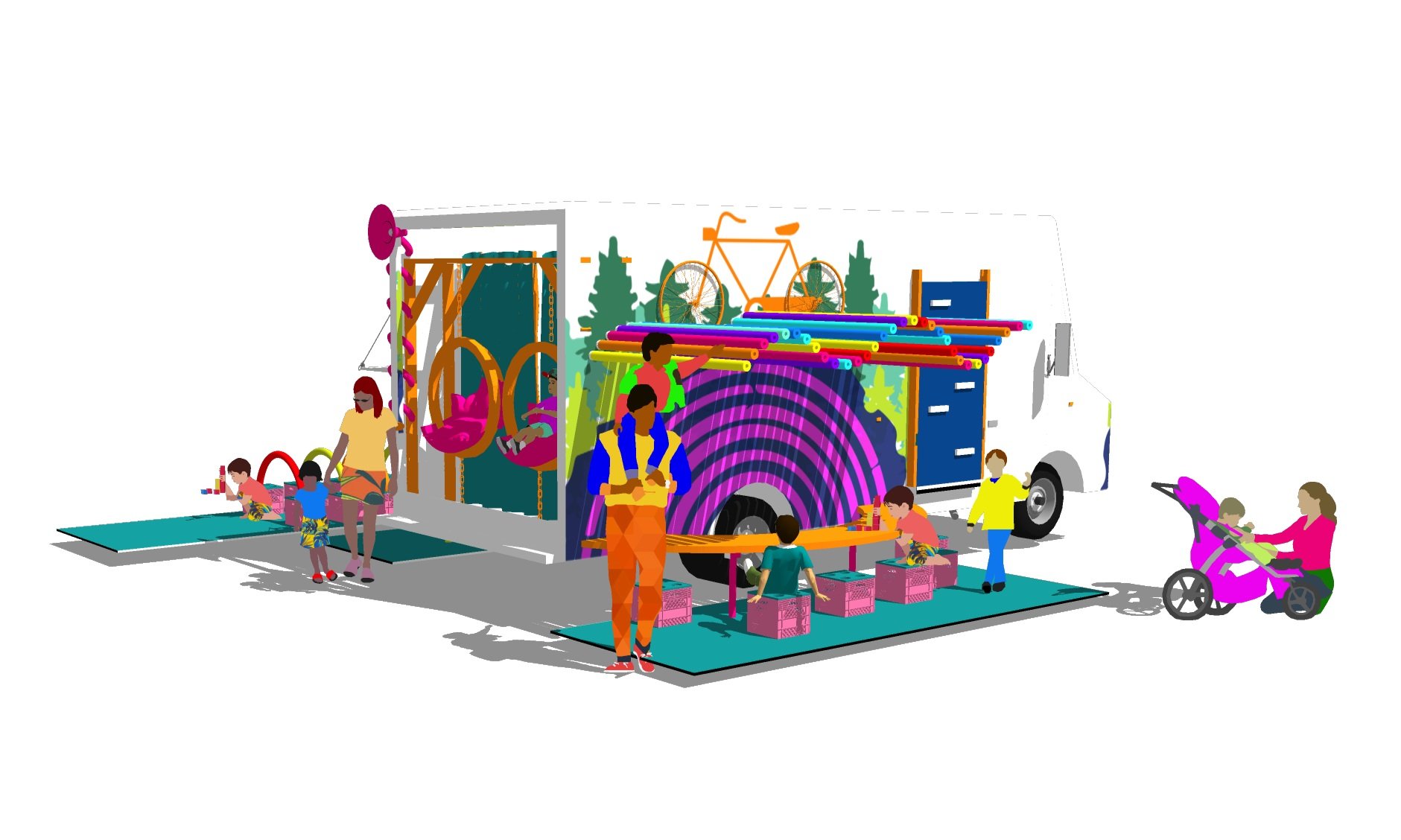

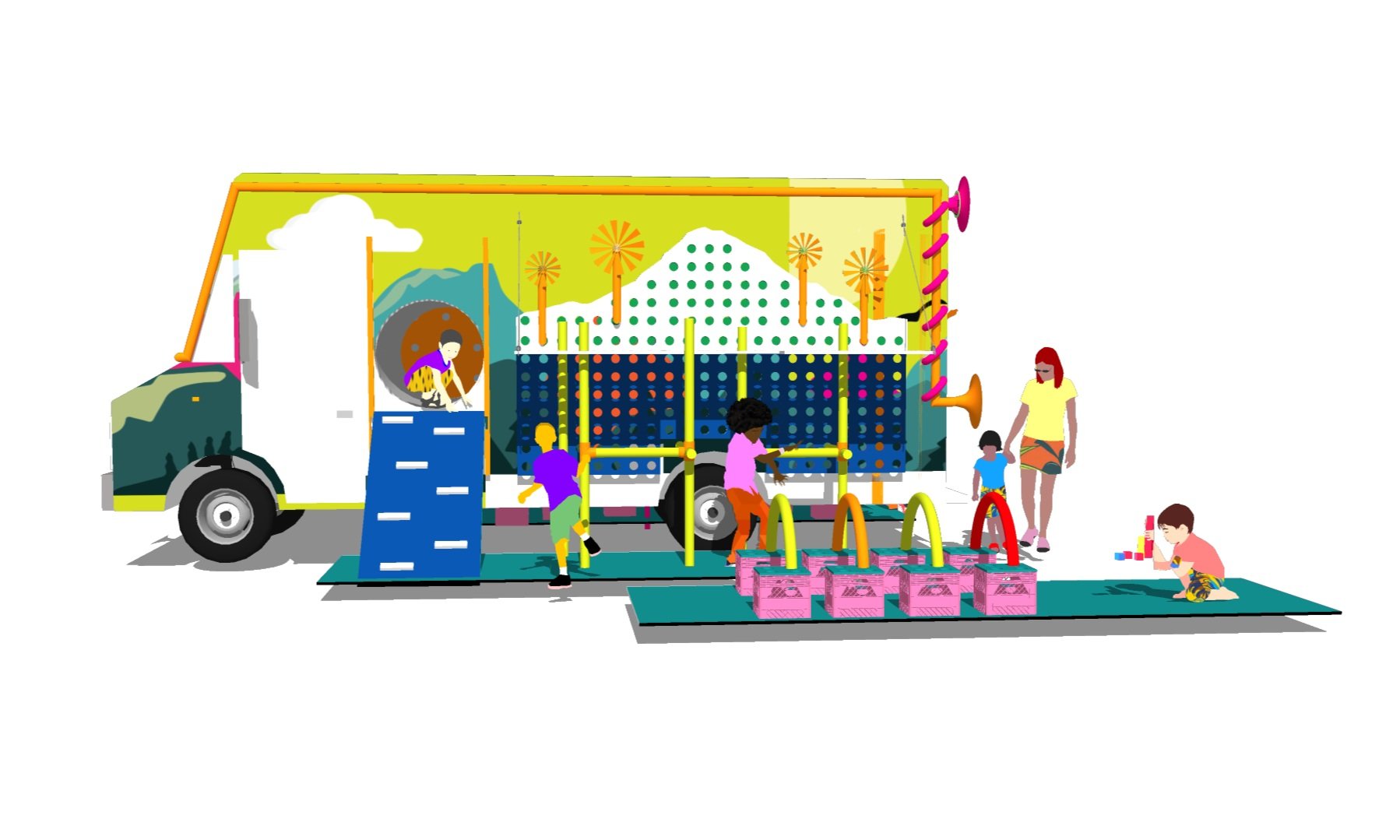
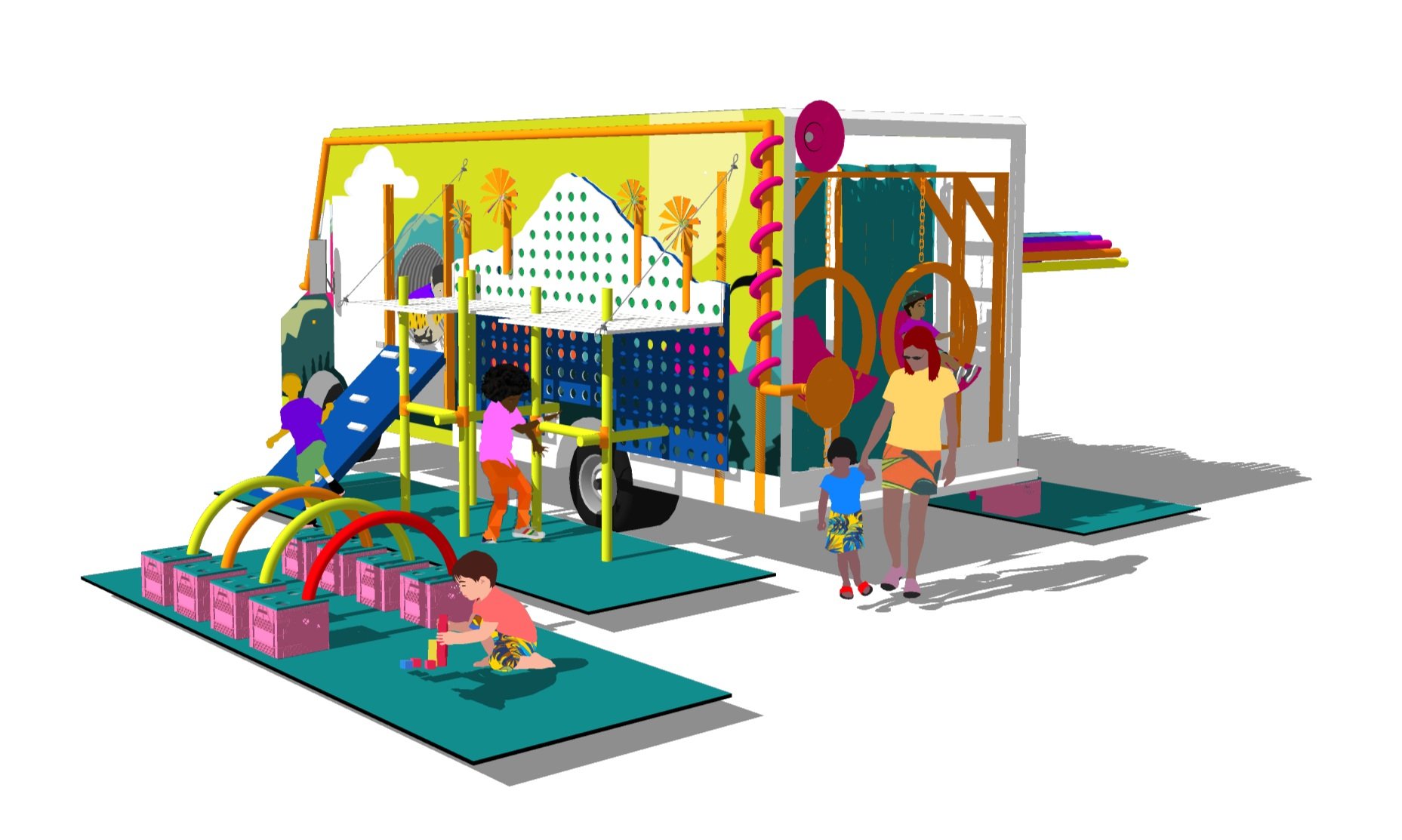
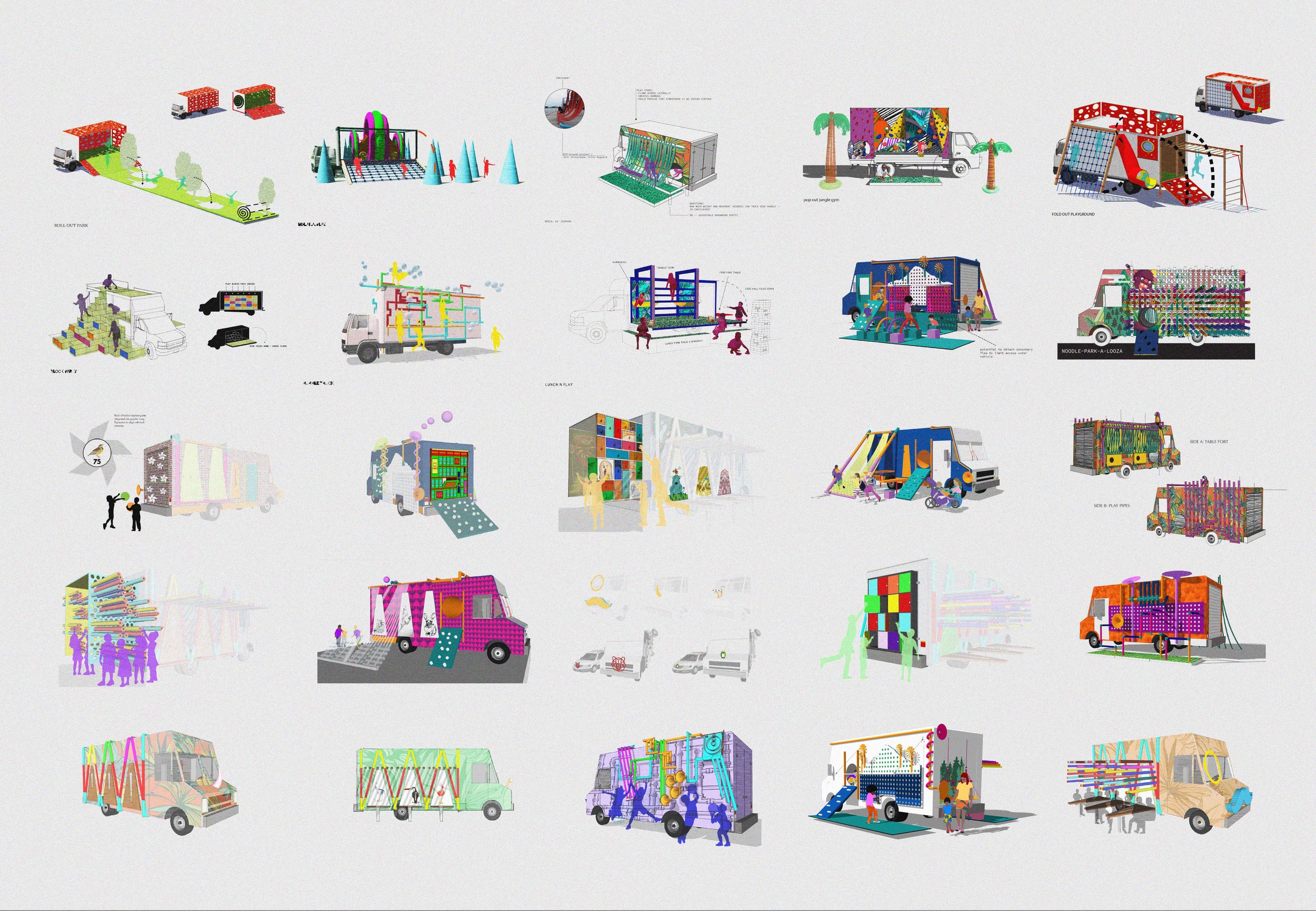
What if instead of asking people to come to distant amenities, amenities like parks were brought to people?
The CPID has been exploring this question with a moveable playground called Mobile Play, which will be funded through a grant from Bank of America for the Summer Free for All program, in partnership with the Portland Parks Foundation. Through Portland Parks and Recreation’s (PPR) Summer Free for All program, Portland Parks serves 100,000 free meals and activities to children in lower-income neighborhoods around the city. Part of the work of Summer Free for All is to reduce the stigma of coming to get a free meal. The program offers a drop-in day camp, with counselors, basketball clinics, storytelling or music lessons—anything to make it less daunting to families to come get food assistance.
Many of the families served live in East Portland, which has fewer parks than the rest of the city, and fewer locations for the lunch program. PPR sets up in apartment complexes when parks or playgrounds aren’t an option. The mobile playground will turn apartment complex parking lots and barebones parks into more welcoming places for kids to play and eat. Mobile Play is designed to be fabricated from a standard bread truck, outfitted with colorful artwork representing Mt. Hood on one side and Forest Park on the other. A climbing ramp, hammock swings, a tunnel for crawling, a large peg board for foam noodles, and a fold-out table for eating and crafts are all a part of the current design. Fabrication of Mobile Play was delayed due to COVID-19, but partners remain hopeful it will resume production soon.
Rosetta
Born out of a need to mobilize their music education and femme empowerment programs, Rock ‘n’ Roll Camp for Girls worked with the Center for Public Interest Design to outfit an RV to function as a mobile music classroom and practice space.
Rock ‘n’ Roll Camp for Girls is a nonprofit based in Portland, Ore. that amplifies the voices of girls, transgender, and gender non-binary folk as they discover their power through collaborative music creation and performance. Their programs empower and cultivate youth leadership, encourage the pursuit of positive social change, and build community through peer-to-peer mentoring. For four weeks each summer, fifty campers split into ten bands and in six days’ time learn an instrument, write an original song, and perform on stage at a local Portland venue. As a small nonprofit, RNRC4G does not have their own brick and mortar space, and they operate their camps within spaces they can rent or access for free. Their new programmatic companion, Rosetta the RV, will be a camp fixture, a space of their own that can roll with us, as well as rock.
Rosetta is a 1989 Winnebago RV. Once a family adventure vehicle, Rosetta now takes to the Portland streets ready to jam. Gutted of kitchen cabinets and mauve velour curtains, Rosetta has been rebuilt as a mobile practice space and a rolling homage to feminist rock and roll. Led by CPID faculty Todd Ferry and CPID Student Fellow Molly Esteve (’20), the design of the practice space features thermoformed plastic panels embedded with feminist rock n roll iconography that also serve as acoustic baffles. The panels are placed on a mahogany rail system held together with brass standoffs, a reference to the material richness of the instruments played within. Bass traps made from old radio cabinets flank the back of the space and frame whiteboard panels that aid teaching and serve as a backdrop. An arched wood ceiling adds warmth to both the feel and sound of the space, and rubber flooring adds bounce and sound absorption to support music and movement. Rosetta will eventually be decked out with a bold, colorful exterior wrap, but has been launched to serve immediate need. During the pandemic, the Rock ’n’ Roll Camp for Girls has used it to host summer shows that were live-streamed to their virtual rock camp students.
RNRC4G sought a mobile space to allow their programs to reach young musicians outside the Portland Metro core. With Rosetta on the road, RNRC4G will be able to provide more after school programming, bringing their resources to areas underserved by the arts. Rosetta is a proof of concept for where the organization hopes to grow their program, and they have begun to seek funding toward a more ambitious mobile project that aims to retrofit a trailer into a performance space with a fold-down stage to further provide music in unconventional and underserved spaces. Named after Sister Rosetta Tharpe, the largely overlooked forebearer of rock and roll, Rosetta and future companions in a mobile fleet will provide a mechanism to elevate such voices in our youth. (Text, Molly Esteve)
MAX Reuse Design Challenge
AfroVillage Concept for MAX Reuse
In addition to exploring things that move as part of its Mobile Placemaking / Mobile Urbanism initiatives, the CPID also considers public infrastructure and mobile unties when they stop moving. The MAX Reuse Design Challenge invited designers to participate in a strategic initiative to explore visions for the repurposing and reuse of retiring MAX cars to benefit communities in the Metro region. Our partners at the Bureau of Planning and Sustainability and TriMet recognize this as a wonderful opportunity to provide resources for our region while preventing these cars from ending up as waste or scrap. While the reuse of these cars may be approached from any angle, we hope that they will be rooted in an acknowledgement of Portland’s need to act quickly and creatively to address homelessness, climate change, income equality, housing insecurity, and racial inequity among other important social and environmental issues. Additionally, the COVID-19 pandemic has revealed significant gaps in our social and physical infrastructure to be able to adequately respond to emergency situations, and the protests against police brutality and in support of black lives have highlighted how safety in public space and access to resources is experienced very differently among BIPOC communities. These unprecedented events provided additional potential avenues worthy of exploration. The resulting work was displayed at the Oregon Rail Heritage Center, with the exhibit opening on August 25, 2020.
10 incredible designs were submitted from members of the local design community that we hope will advance the dialogue around new visions for addressing community need with an impactful resource that would otherwise go to waste. These designs will inform future work of this nature in our region for years to come. Already, the AfroVillage has received grant funding to pursue next steps on turning their project proposal into a stationary resource within Portland, and partners at the Bureau of Planning and Sustainability, TriMet, and the CPID are supporting these next steps. Let’s strive to make more of these visions a reality!

